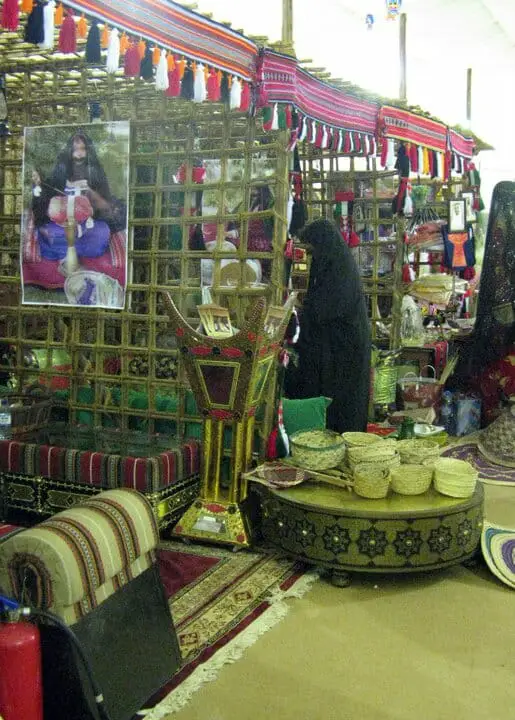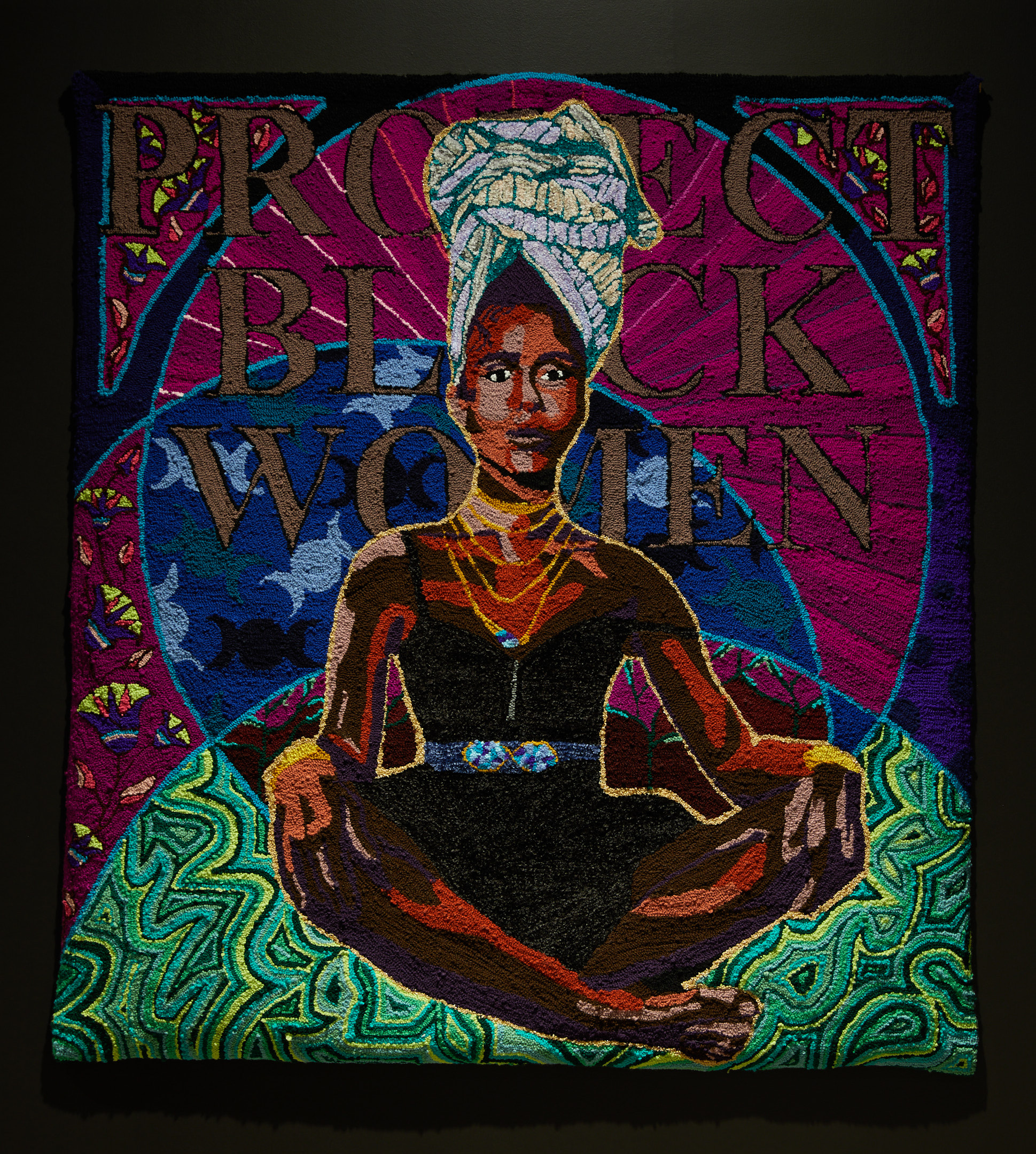Today I am reminiscing about a trip I took a few years ago. Back in 2011, our family lived in Dubai. We loved the desert. We often travelled into the dunes and mountains of the UAE and Oman. The vast landscapes, the changing colours and textures of the desert, and the amazing diversity of life in this seemingly lifeless terrain never ceased to delight us.

It was on one of these trips that we visited the Liwa Date Festival. Part of the festival was a traditional craft market. It was here where I first met Bhkita and Hamama, a Bedouin mother and daughter team selling their Sadou weaving products. Sadou is a traditional Bedouin form of weaving done on a floor loom using yarn handspun using camel and goat hair.

There were several weavers selling their wares, but these two women’s work stood out. The craftsmanship was exceptional, their designs were intricate and the use of colour was more complicated than the others. I was eager to find out more, but my Arabic was as limited as their English and I left frustrated at our lack of communication. I did buy a small handwoven carpet though, which I still use in my home in Australia today.

Back home in Dubai, I made contact with Leila Ben-Gacem from the Sougha Project. This was an initiative whose aim was to preserve the local heritage by helping artisans turn their traditional craft into an economically viable enterprise. Bhkita and Hamama were one of their success stories.
A few months later I had the opportunity to visit these two talented ladies at their home in Sila, a small community about three hours drive outside Abu Dhabi, close to the Saudi border. I was accompanied by Leila, the project coordinator and the driving force behind this project.

We were welcomed into a beit al-sha’ar, or traditional Bedouin tent, erected next to their modern brick home. A low table laden with traditional Arabic coffee, dates, pastries and other delicacies sat surrounded by floor cushions on a traditional carpet floor.
Bhkita showed me how they spin the yarn from camel and goat hair with a hand spindle. She also proudly displayed the products they make from their weaving. Handbags, laptop bags, table runners and other household goods. Hamama told me that her mother never went to school but she can write her name and she ‘knows numbers.’
The two women then took me inside their house to show me their work room and loom. The loom is set up in what would normally be the reception area of the house. Traditionally the loom would be made of split palm tree trunks held together with palm fibre twine. The single heddle would be held in place with wooden stakes. The ‘modern’ version was made of galvanised pipes held together with nylon rope. The piece of pipe holding the string heddles is kept in place with bricks.

With Sadou weaving the warp yarns, strung across the loom in a figure-eight, hold the pattern and the weft yarn provides the strength. Therefore the warp yarns are the coloured ones and are strung onto the loom in a predetermined order. The weaver has to work out the pattern before she sets up the loom. This sounds easy if you have a graph or a pattern to work from, but these women are illiterate. They don’t have paper patterns to work from It’s all in their head. No wonder Bhkita ‘knows numbers’ – counting is what she does!

Bhkita showed me how she works. She sits down on top of the finished part of her textile, facing the heddles. Her hands seem to work effortlessly, but I soon realise weaving on a floor loom is a physical job. She has two sword beaters or el haifs (flat pieces of wood with pointed ends and bevelled edges) set into the warp yarns in different configurations, as determined by her pattern. By turning one of them on the side she opens up the shed and increases the tension at the same time. After she passed the shuttle or el masr (a stick on which the weft yarns has been wound) through, she beats the weft into place with a hook beater. In traditional times this used to be a gazelle horn but now it is an iron hook or a bent screwdriver. Beating every row is very important to keep the textile tight and to ensure an even tension throughout.
Throughout this whole process, she never stops talking. She makes sure I understand everything she does, gives me time to take photos of every step, and then continues to talk. About her work, her family, her grandchildren, her patterns, and her family’s annual visits to the desert, across the border in Saudi, where they still roam free for a few months every year.

I left Sila that day, looking at the desert with new eyes. There was even more life, love, and creativity in this seemingly lifeless landscape than I would ever understand.
To this day I am still grateful to Bhkita and Hamama who opened their home to me, and to Leila who arranged the visit, translated at top speed, and shared her love of the Bedouin people to me.
Leila Ben-Gacem now lives in her native Tunisia where she still devotes her time and energy to design solutions that unleash national art and craft potential.
Sadou weaving is also practised in Saudi Arabia and Kuwait. Visit Joy Hilden’s website to learn more.




